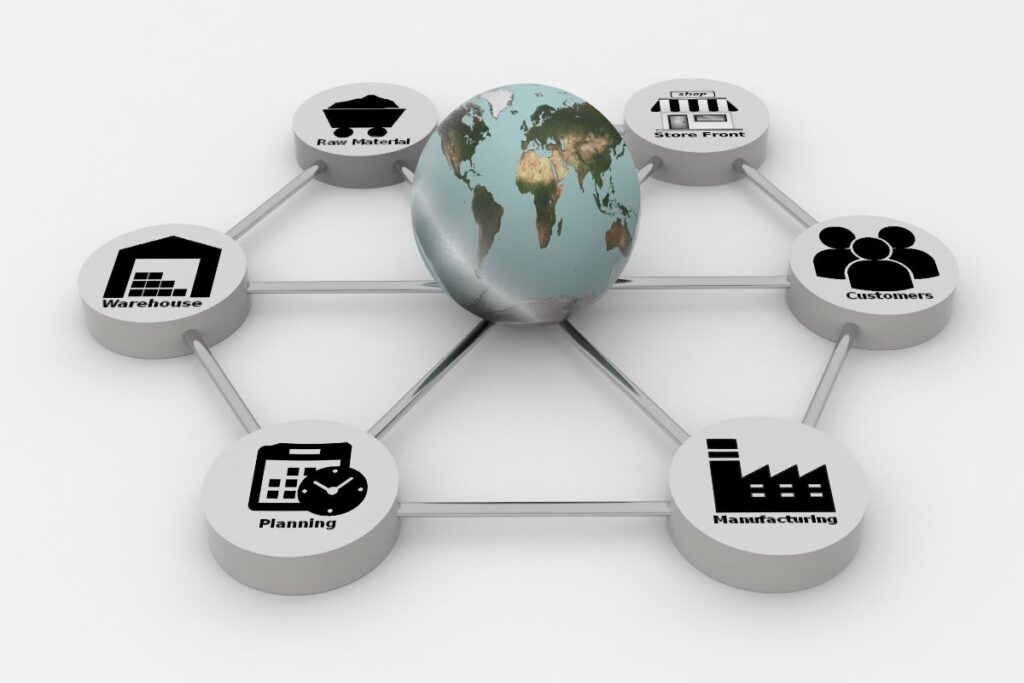
Green Technology Innovations in Supply Chains
With the growing need for clean technology, science has developed green technology.
Green technology, cleantech, or environmental technology applies science and technology to produce eco-friendly products and services. The end goal of green tech is to reduce continuing damage to the environment, restore existing damage, and promote regeneration. It contains everything done to revive our environment and leverage Earth’s natural resources in an eco-friendly manner.
From solar panels to developing waste management systems, green technologies aim to reduce carbon emissions, conserve natural resources, and promote more sustainable options to traditional methods. Also, they hold the possibility to create regenerative solutions that can improve and restore our ecological harmony, going beyond mere mitigation to foster a more resilient and flourishing environment.
According to the CSIRO, with a population of more than 1.4 billion, India generates 26,000 tonnes of plastic waste daily. This is equal to about 26,000 small cars. Presently, a considerable scrap of plastic waste in India is in landfills.
What is Sustainable Supply Chain Technology?

Companies that foster corporate sustainability through digital transformation will likely be tomorrow’s leaders. For example, various technologies, including cloud computing, smart devices, and 3D printers, can be implemented to optimize supply chain operations and achieve dual transformation.
Although supply chain sustainability technologies are helpful for businesses, some managers need more information about their implementations. To close the information gap, in this article, we will explore the top 6 technologies that supply chain executives can use to reduce for the betterment of society and the environment.
Green Technologies for Supply Chain
Smart devices
Green technology revolutionizes supply chain operations, employing smart sensors to slash warehouse emissions by 30% through LED lights and intelligent HVAC systems. Drones, ushering in faster last-mile delivery, reduce costs and greenhouse gas emissions, which is particularly advantageous in densely populated areas.
Telematics, monitoring vehicle conditions and driver behavior, curbs fuel consumption, illustrated by the Michelin Effifuel project’s 2-liter per 100 kilometers reduction in oil use. Self-driving vehicles act as sustainable transport hubs, maximizing item carriage and reducing emissions, aided by IoT connectivity for optimized routes. Smart devices’ omni presence improves environmental impact measurement accuracy, elevating sustainability efforts.
Electric vehicles
Electric vehicles can drastically lower GHG emissions without negatively affecting supply chain processes if green energy sources generate most of the electricity in a location and sufficient charging infrastructure is in place.
Companies can replace traditional fleets and attract more investors with excellent ESG reporting scores. Also, businesses can skip thinking about how to organize charging activities. There are e-mobility tools that alert EV owners to charging stations that are ready to use, and EV owners can return their vehicle to a stable parking space after it is fully charged.
EVs are also helpful in the last mile of delivery. For example, DHL has used EVs for last-mile delivery, has already covered more than 100 million kilometers, and radiates tons of less CO2.
Public-cloud Enterprise Resource Planning (ERP) tools
Enterprise Resource Planning (ERP) tools hosted on the public cloud are pivotal in advancing sustainability initiatives within businesses. These systems empower executives to assess and regulate environmental impacts effectively. Leveraging the efficiency of large public cloud providers significantly reduces companies’ carbon footprint.
Public cloud ERP systems focus on sustainability and offer real-time financial and operational data integration on a unified platform. Supply chain executives can easily determine pain points by accessing this data with just an internet connection, simplifying their monitoring of supply chain operations.
Specialized public cloud ERP systems automate the calculation of product and organizational carbon footprints. They employ emission factors specific to various operations, allowing firms to swiftly estimate emissions for each activity and identify areas for impactful improvements. For instance, if the field sales team utilized 27,000 gallons of gasoline last month, the ERP system, using operation-specific emission factors, can calculate approximately 240 tons of CO2 emissions, aiding executives in pinpointing environmental impacts.
Moreover, executives can develop strategic plans to minimize environmental effects based on automated product carbon footprint estimations. High product carbon footprint scores contribute to attracting creditors and enhancing market share. ERP hosting is crucial, as public clouds are more environmentally friendly than on-premise installations.
3D printing
Leveraging 3D printing transforms manufacturing, enabling on-site production using digital CAD models. This additive manufacturing offers supply chain executives cost savings in transportation, reduced greenhouse gas emissions, and time efficiency.
Digitizing intermediate goods and replicating them at the following production site via digital coding allows companies to avoid freight costs and delays from distant shipments. Analogous to sending an email and printing it on paper, this process enhances efficiency, saving time and costs and reducing greenhouse gas emissions compared to traditional shipping.
3D printing, like email, is environmentally friendlier in smaller quantities and over longer distances. Supply chain managers can strategically identify unique intermediary goods from distant locations, maximizing additive manufacturing advantages.
Anglo American, a mining enterprise, collaborates with a 3D printing vendor, digitizing mining rock drill bits and transmitting digital files to sites instead of physically transporting drills. The accompanying video illustrates how integrating 3D printing enhances corporate sustainability significantly.
Wrap Up!!!
Green technology encompasses many innovative solutions to reduce human environmental impact, conserve resources, and promote sustainability. From renewable energy sources and sustainable transportation to waste management and energy efficiency, green/clean technology can change industries and create a cleaner tomorrow for all. By investing in green technology, supporting government policies, and taking practical steps to decrease our environmental footprint, we can all contribute to a more sustainable world and help maintain our planet for future generations.

Prachi, an accomplished Chief-Editor at The Sustainable Brands Journal, has 15+ years of experience in Europe, the Middle East, and India, managing 90+ global sustainable brands. She’s a prolific writer in sustainability, contributing to various publications. Prachi’s unwavering passion and expertise make her a recognized authority, driving positive change and inspiring a sustainable future.





